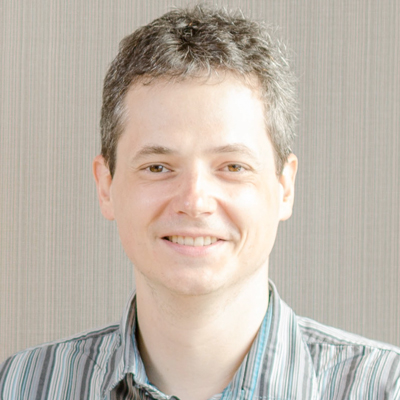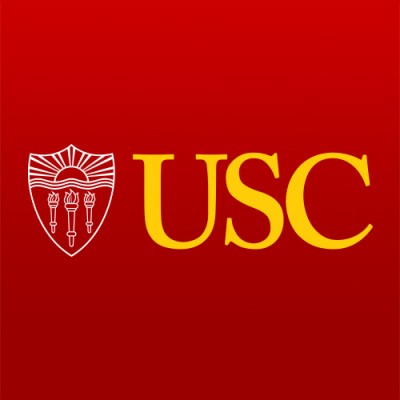Fast physics for simulation, training and product testing
Dr. Jernej Barbic of the University of Southern California works in the areas of computer graphics and animation, virtual reality, interactive physics, computer games, as well as rapid product design in engineering. The revolutionary science-fiction author Jules Verne was quoted, "Anything one man can imagine, other men can make real."
Dr. Jernej Barbic identifies with Verne's message: film visual effects inspire us. They cultivate our imagination and instill within us the notion that, much in the way Captain Nemo's 19th century submarine became a reality, anything that can be dreamt, visualized or simulated, can later be realized and manufactured. Dr. Barbic's work on virtual reality and fast simulation makes it possible to design better, cheaper and safer products such as cars and airplanes. It also makes film and computer games more realistic and fun, and surgical and heavy machinery simulation-based training more reliable. Dr. Barbic is also a strong proponent of free, open-source software. He devotes a significant amount of time to writing free, quality, re-usable software implementing his ideas, as well as those of other leading scientists. Thus, he wrote Vega FEM, a free software library (100,000 lines of C/C++) for deformable object animation that has been used on several films and many other endeavors in computer graphics and related fields. Computer graphics, animation and virtual reality have made monumental strides in the last few years with the rapid advancement of computer processing power. However, realistic simulations require realistic, complex models, which are computationally demanding even for today's computers. Dr. Barbic is taking these fields further by making the underlying mathematics and physics faster, and therefore more interactive and scalable to complex models. Such "fast physics," as deemed by Dr. Barbic, allows for more complex virtual worlds, more design iterations and an increased ability to fix and perfect the designs. This technology enables animations of rich, complex worlds, more immersive virtual reality and expedited product design. In his work, Dr. Barbic has animated botanical systems, human muscles, internal organs, and engineering systems such as bridges, heavy machinery (cranes, excavators) and airplane and car components.
- Dr. Barbic is beginning work on a project that will enable engineers to design complex mechanical structures in virtual reality using force-feedback (haptics) technology. "Smart manufacturing," or the design of complex mechanical structures in virtual reality, has long been a dream in the manufacturing community, but is now a dream that can be realized. In the traditional manufacturing process complex structures like automobile engines or an airplane's landing gear take months to design due to the thousands of individual parts that constitute them. All of the parts must be assembled snugly enough to function as a single unit. It is difficult for designers to know in the design stage if this is possible, and so they must wait for the assembly teams to respond with prototypes and helpful insight. In collaboration with leading companies in the field, Dr. Barbic is starting a project that eliminates the need for multiple physical revisions of the design. Instead, the plans are revised and rapidly tested in virtual reality. This is performed using Dr. Barbic's fast algorithms for collision detection and deformable object simulation, and using haptics technology, the robotics that creates the feeling of real forces. Users can physically feel resistance through the haptic device when one part of the virtual design collides with another. By avoiding the need for multiple trial-and-error prototypes, the manufacturing process increases in speed and efficiency. Such technology will save companies time and millions of dollars in capital, and enable safer newer products to enter the market more quickly.
- Dr. Barbic's Vega FEM is a complex C/C++ software library with over 100,000 lines of code is open-source and free to the public for all applications, whether academic or industrial. The library is an efficient simulator for three-dimensional deformable objects. All objects in this world are at least somewhat deformable and efficient simulation of their motion has many applications. Vega FEM is comprehensive, well-documented, and released under the free BSD software license. It implements five major methods widely used in computer graphics and animation today. Previously, implementations of these methods were either not publicly available, not clean enough to be re-usable, not free, not documented, or only implemented limited functionality. Vega FEM offers the most extensive material simulation capabilities of any of the competing free libraries, and boasts over 1,500 unique downloads in two years. Graduate students using Vega can immediately begin new research by downloading the software, rather than taking two or so years to manually re-implement existing methods. Engineers can save time and money by rapidly evaluating and using the methods implemented in Vega FEM, avoiding re-inventing the wheel. The nature of the library being free encompasses Dr. Barbic's belief that free access to technology allows for the fast and efficient sharing of emerging ideas.
- In another ongoing project, Dr. Barbic has created a state-of-the-art simulator to animate the motion of botanical systems such as trees, bushes or flowers. He is the first in science to compute the motion of botanically realistic, large, adult trees, solely using physics. When fast physics is applied to botanical systems, this means more anatomically realistic foliage that moves more realistically in its environment, and that are computed orders of magnitude faster than previously possible. The algorithms that create this movement can be adjusted to achieve many effects, such as allowing for a tree to blow in the wind, react to collisions with external objects, or, for example, the environmental settings can be altered to allow for differing forces of gravity (2X, 1/2X, or even reverse gravity). Trees can be duplicated and tweaked so that soon a forest of slightly differing structures has grown. With nearly 1/3 of the world's landmass covered in vegetation, it is easy to understand the importance of creating realistic virtual botanical systems. Films like James Cameron's "Avatar" are pioneering the trend for almost entirely virtual movie settings. In addition to film, creating virtual forests and vegetation also has applications in video games, architecture, forestry planning and preservation, and even military training simulators.

Bio
 Warner Bros. Studio's "The Hobbit: The Desolation of Smaug" credits Dr. Barbic for his work in visual effects for the film.
Warner Bros. Studio's "The Hobbit: The Desolation of Smaug" credits Dr. Barbic for his work in visual effects for the film.
For the last decade, Dr. Barbic has published numerous papers at ACM SIGGRAPH, the leading computer graphics venue in the world.
Dr. Barbic is an amateur triathlete and regularly competes in races in Southern California.
In addition to his native Slovenian, Dr. Barbic is fluent in English and French and also holds a working knowledge in Italian.
In the News
Until now, simulations modeling the way objects bounce, bump, and change have been too complex to run in real time, but Jernej Barbic is changing this
Vega is Dr. Barbic's computationally efficient and stable C/C++ physics library for three-dimensional deformable object simulation.
General purpose modeling software "Vega FEM" will allow a wide range of users to simulate objects in real time.
Interactive Authoring of Simulation-Ready Plants
Collision detection between complex mechanical components
Publications
Videos
Awards
2014 The Okawa Research Award
Presented by the Okawa Foundation
2014 Sloan Research Fellow
Presented by the Alfred P. Sloan Foundation
2011 TR35 "35 Innovators Under 35" (in the world) Award
Presented by MIT Technology Review
NSF Career Award
Presented by the National Science Foundation, Awarded 2011-2016
Film Credits, The Hobbit: The Desolation of Smaug (2013)
Film credit for work in visual effects
2013 "Google Solve for X" website
Research talk selected by Google as an example of "moonshot thinking"
2007 Best Paper-and-Presentation Award
Presented by ACM SIGGRAPH/Eurographics Symposium on Computer Animation
2001-2007 Computer Science Department Graduate Fellowship
Presented by Carnegie Mellon University


